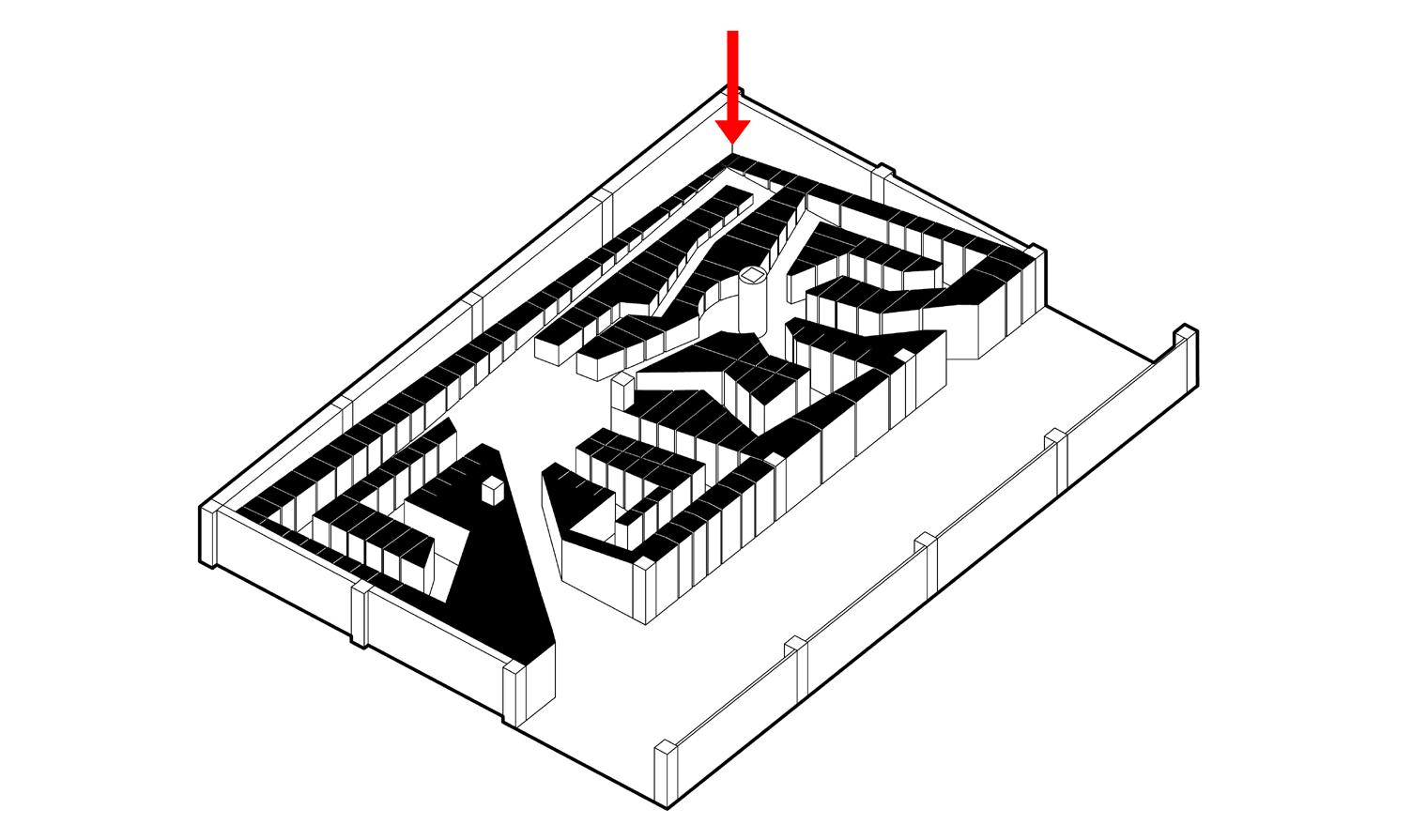
2 minute read
Labyrinth Home-stay proposal No. 3
by 張皓翔
This project is centered around its circulation, which addresses the client’s desire for a home-stay that is secluded and private. By creating independent accesses for each unit, which also leads to the rooftop viewing platform, the circulation itself becomes part of the private domain. This operation physically strengthens the sense of privateness of the units, a sense that is capable of being received by all individuals from different backgrounds experiencing this space.
Contradictions are also an important agency in cultivating the guest’s perception. In addition to the “one/two building” contradiction, further operations were conducted on the stairs themselves. From the disposition of the exterior and the perspective from the entrance foyer, it is easy to assume that the four circulations were arranged into “two cores.” It is only when you traverse the stairs that you discover this is not the case, since the stairs lead right across the length of the building, leaving you wondering why you didn’t collide with the other circulations. The more “receptive” guests would notice these contradictions, while the less-receptive ones will be influenced on a subconscious level; either way, shrouding the structure under a veil of mysteriousness, rendering it otherworldly and thus secluded.
Advertisement


Striving for a personal stance
We live in an epoch of pluralism. Without a certain authoritative “ism” to guide us, anything seems to go. Within this chaos, designers must struggle against the growing mob of subjective opinions, no longer able to seek recourse in universally validated ideologies. This resulted in a generation of designers that are neutral and conscious of being politically correct, constantly hiding behind parameters and regulations to battle the ever-growing individualism.
from the consciousness during the process of design thinking. These hidden themes act as agents, influencing our design choices, pushing us down certain paths, and defining who we are as designers. To harness such knowledge and make it the basis of every design, it would then be more unlikely to produce any generic work, even when there are only given parameters to work with. Irrefutably, these themes and ideas develop and change over time, which is why the search becomes a lifelong endeavor; an exploration into the unknown that does not end with the conclusion of each project.
Even under such hopeless conditions, I do not believe it is logical for the designers of our current epoch to operate without a personal “Stance.” Approaching each project like a blank canvas and use given parameters exclusively, hoping to create something unique every single time is simply unrealistic. The outcome of such an operation would most likely be mundane and mediocre. However, here I am not propagating the development of a personal “formal disposition,” but proposing a self-referential approach on a meta-level. To uncover underlying themes and ideas which are omnipresent, yet remain hidden
In hindsight, five themes have always been influencing me, all of which coalesced to shape my current understanding of “space-making.” It is my intent to present this temporal conclusion of my exploration.






